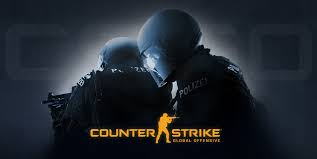Counter-Strike: Global Offensive, commonly known as CS:GO, has become a cornerstone in the world of competitive gaming and eSports. Since its release in 2012, this first-person shooter developed by Valve and Hidden Path Entertainment has captivated millions of players worldwide, offering them an adrenaline-fueled experience characterized by tactical gameplay, teamwork, and precision shooting. In this blog post, we will delve deeply into the intricate layers rikvip that make Counter-Strike: Global Offensive not just a game but a phenomenon that has shaped the landscape of gaming culture.
From its rich history and evolution to its strategic depth and community engagement, CS:GO is a remarkable study in how a video game can transcend entertainment and become a global sport. We will explore the various elements that contribute to its enduring popularity, dissecting everything from gameplay mechanics and community dynamics to the socio-economic aspects surrounding it.
The Evolution of Counter-Strike: Global Offensive
The story of CS:GO begins with the original Counter-Strike, which started as a mod for Half-Life in 1999. This section explores the timeline that led to the creation of CS:GO, the changes made over the years, and the significance of these developments.
The Birth of Counter-Strike
Counter-Strike was initially a simple mod created by Min Le and Jess Cliffe. The revolutionary concept of counter-terrorism versus terrorism resonated with players, and soon, it evolved into a standalone product that set the stage for future iterations.
The transition from a mod to a commercial success marked a significant turning point in gaming history. It introduced players to thrilling rounds of intense firefights, with varied maps that required both skill and strategy. The core mechanics established in this version laid the groundwork for what would eventually evolve into CS:GO.
Significant Milestones Leading to CS:GO
After its initial success, numerous versions of Counter-Strike were released, each introducing new features while retaining the essence of team-based action. From Counter-Strike: Condition Zero to Counter-Strike: Source, players saw graphical upgrades and slight mechanical changes. However, there was a growing demand for a more refined and competitive experience.
The release of CS:GO in 2012 was a watershed moment. With updated graphics, improved matchmaking systems, and support for esports, it addressed many criticisms from the previous games while simultaneously appealing to both novice and veteran players.
Changes in Gameplay and Mechanics
CS:GO brought significant changes in gameplay mechanics, including weapon skins, new maps, and the introduction of the “Economy System.” This addition enabled players to strategize their purchases based on prior round performance, adding a layer of depth to the overall gameplay.
Another important change was the introduction of “Prime Status,” allowing players to connect with others of similar skill levels, thereby enhancing the competitiveness of matches. These gameplay enhancements contributed to a more engaging and immersive experience, solidifying CS:GO’s position in the competitive gaming scene.
